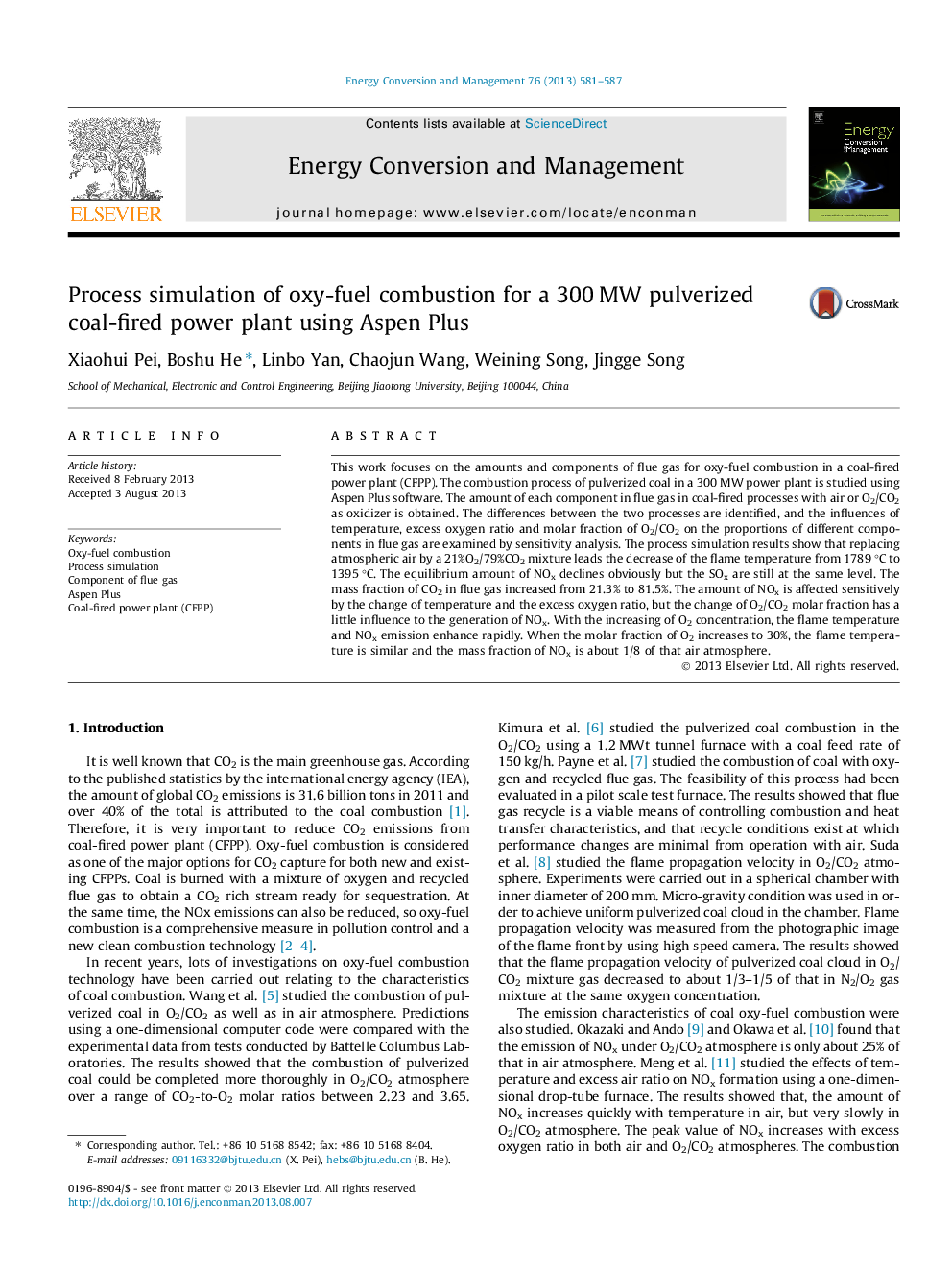| Article ID | Journal | Published Year | Pages | File Type |
|---|---|---|---|---|
| 760815 | Energy Conversion and Management | 2013 | 7 Pages |
•Combustion processes were studied with Aspen Plus for a 300 MW pulverized coal power plant.•The amount of each flue gas component in coal-fired processes with air or O2/CO2 as oxidizer was obtained.•Differences between the two process models were identified.•The influences of operation parameters on the flue gas components were examined.
This work focuses on the amounts and components of flue gas for oxy-fuel combustion in a coal-fired power plant (CFPP). The combustion process of pulverized coal in a 300 MW power plant is studied using Aspen Plus software. The amount of each component in flue gas in coal-fired processes with air or O2/CO2 as oxidizer is obtained. The differences between the two processes are identified, and the influences of temperature, excess oxygen ratio and molar fraction of O2/CO2 on the proportions of different components in flue gas are examined by sensitivity analysis. The process simulation results show that replacing atmospheric air by a 21%O2/79%CO2 mixture leads the decrease of the flame temperature from 1789 °C to 1395 °C. The equilibrium amount of NOx declines obviously but the SOx are still at the same level. The mass fraction of CO2 in flue gas increased from 21.3% to 81.5%. The amount of NOx is affected sensitively by the change of temperature and the excess oxygen ratio, but the change of O2/CO2 molar fraction has a little influence to the generation of NOx. With the increasing of O2 concentration, the flame temperature and NOx emission enhance rapidly. When the molar fraction of O2 increases to 30%, the flame temperature is similar and the mass fraction of NOx is about 1/8 of that air atmosphere.
Graphical abstractThis paper studied the combustion processes of pulverized coal in a 300 MW power plant using Aspen Plus software. The amount of each component in flue gas in coal-fired processes with air or O2/CO2 as oxidizer was obtained. The differences between the two processes were identified, and the parameter influences of temperature, excess oxygen ratio and molar fraction of O2/CO2 on the proportions of different components in flue gas were examined by sensitivity analysis.Figure optionsDownload full-size imageDownload as PowerPoint slide
